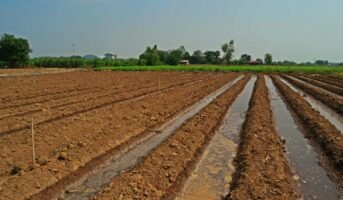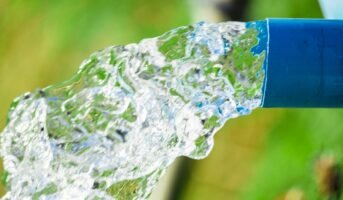A large portion of the net sown land in India does not receive much rainfall during the monsoon season, which lasts just four months. Thus, irrigation is crucial to overcoming rainfall’s regional and temporal variability. According to archaeological and historical evidence, people have been building complex hydraulic structures like dams made of stone debris, reservoirs or lakes, embankments, and irrigation canals for ages. Naturally, this tradition has been carried on in contemporary India by constructing dams in the majority of river basins. Let’s take a closer look at these irrigation techniques in India.
See also: Types Of Irrigation: Everything you Need to know
Sources of irrigation: Ultimate potential
Only roughly 66 million hectare (mha), or 47.6% of the net planted area, is thought to be irrigated. In order to boost agricultural productivity and production, more cultivated land must be placed under guaranteed irrigation. According to estimates, India’s entire ultimate irrigation potential is 140 mha, with 64 mha coming from groundwater sources and 76 mha from surface water sources.
Irrigation: Sources and techniques
Following are some of the most widely used techniques and sources of irrigation in India.
Sources of irrigation #1: Canal irrigation
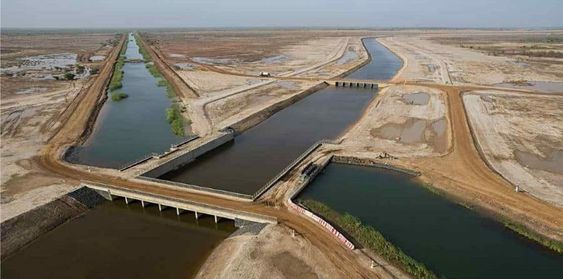
Source: Pinterest
A canal is a man-made waterway built for irrigation and water delivery. Two different kinds of canals exist:
- Inundation canals: These are taken from the rivers without any type of control mechanism, such as weirs or other structures, at their head. These waterways are only practical during the wet season.
- Perennial canals: These are ones that are created by building a barrage over perennial rivers. The majority of the canals in India nowadays are perennial.
In places with deep rich soils, a permanent source of water, and a large command area, canals can be a useful source of irrigation. So, the northern plains are where the majority of canal irrigation is concentrated. Canals are basically nonexistent in the peninsular plateau region due to the rocky surface. South India’s delta and coastal regions do, however, have some canals for irrigation.
Currently, fewer than 25% of the nation’s total irrigated land is covered by canals, down from nearly 40% in 1950–1951. Uttar Pradesh, Punjab, Haryana, Rajasthan, and Bihar make up the majority (60%) of the country’s canal irrigation land.
Canal irrigation: Advantages
- A perennial source offers protection against droughts.
- It provides the fields with fertile sediments.
- It is affordable enough to cover a huge region.
Canal irrigation: Drawbacks
- Groundwater logging, salinisation, and marshy conditions brought on by canal water soaking into the soil also cause malaria and floods.
- Canal irrigation can lead to significant water wastage.
Sources of irrigation #2: Wells (and tubewells)
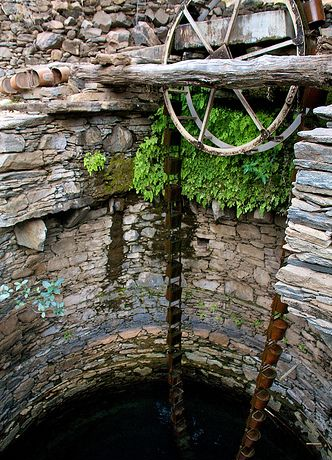
Source: Pinterest
A well is a hole created in the earth to collect water from the subsoil. Although deeper wells, with a depth of up to 15 metres, are frequently dug, wells are typically 3-5 metres deep. India has used this method of irrigation since the dawn of time. Several methods are used to draw groundwater from the well. The Iranian wheel and dinghy (lever) are the most commonly employed techniques.
A tubewell is a deeper well that is normally over 15 metres deep. The water is pumped using an electric motor or a diesel engine-powered pumping set. Electric tubewells are rapidly replacing well irrigation. However, many wells are still in use in areas without power or where the farmers cannot afford diesel fuel. This type of irrigation is widespread in areas with plentiful supply of sweet groundwater. It is especially well suited to places with porous rock structures where groundwater can accumulate through percolation. As a result, wells are more common in places with alluvial soil, regur soil, etc. and less common in regions with rocky terrain or mountains.
The weathered strata of the Deccan trap and crystalline rocks, the sedimentary zones of the peninsula, the deltaic regions of the Mahanadi, Godavari, Krishna, and Cauvery, and parts of the Narmada and Tapi basins are among these locations. The majority of peninsular India, however, cannot be irrigated by wells due to its stony construction, uneven surface, and dearth of subsurface water.
Brackish groundwater is present in large swaths of desert in Rajasthan, adjacent areas in Punjab, Haryana, and Gujarat, as well as in certain areas of Uttar Pradesh, making them unsuitable for well irrigation. At the moment, more than 60% of the net irrigated land in the nation is supplied by irrigation from wells and tubewells.
The majority of the country’s well-irrigated land—28% of it—is in the state of Uttar Pradesh. About three-fourths of the entire well-irrigated land is accounted for by the states of Uttar Pradesh, Rajasthan, Punjab, Madhya Pradesh, Gujarat, Bihar, and Andhra Pradesh.
Well/Tubewell Irrigation: Advantages
- It is the easiest and least expensive source of irrigation/
- When the need arises, a well can be utilised as a standalone source of irrigation. On the other hand, canal irrigation is governed by several organisations and cannot be employed at will.
- Some salts found in groundwater can benefit crops.
- This technique does not cause difficulties with floods and salinisation.
- A well may be drilled wherever convenient, but the range of canal irrigation is limited beyond the canal’s tail end.
Well/Tubewell Irrigation: Drawbacks
- Irrigation is only possible in a small region. An irrigation capacity of 1 to 8 hectares is common for a well.
- It is not appropriate for arid areas.
- Overuse of this irrigation technique could cause the water table to drop.
Sources of irrigation #3: Tank irrigation
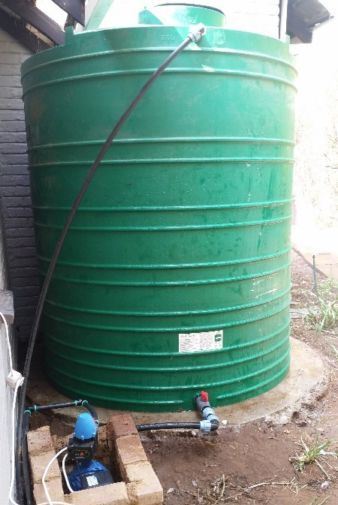
Source: Pinterest
A tank is an irrigation reservoir, a small lake or pool created by damming a stream valley to store monsoon rain for later use. It makes up for around 3% of India’s net land under irrigation. Tank irrigation is widespread in the peninsular plateau, where Tamil Nadu and Andhra Pradesh are the top two states.
The greatest area of tank irrigation in India (29%) is located in Andhra Pradesh, followed by Tamil Nadu (23%).
Due to the following factors, it is mostly practised in the peninsular region:
- It is challenging to dig canals and wells due to the undulating terrain and rough rocks.
- Due to the hard rock structure and the limited supply of groundwater, there is little percolation of water.
- Due to the seasonal nature of most rivers and the torrential nature of many streams during the rainy season, the only way to utilise this water is to impound it by building bunds and tanks. Additionally, it is simple to collect rainwater in trenches, whether they are constructed naturally or artificially, due to the rocks’ impermeability.
Tank irrigation: Advantages
- The majority of tanks are made of natural materials and don’t require much money to build.
- It can serve as a source of irrigation for a single farmer or a small group of farmers.
- Additionally, longer-lived fish can be employed for fishing.
Tank irrigation: Drawbacks
- Lack of rain can cause these tanks to dry up during the dry season, and their beds can silt up.
- Tanks require a lot of space.
- It can result in losses from evaporation.
- It can occasionally be necessary to elevate the water to transport it to the field.
FAQs
What is irrigation?
Irrigation is the process of applying water to crops and plants to help them grow and produce crops. Irrigation can be done through a variety of methods, including sprinklers, surface irrigation, and drip irrigation.
Why is irrigation important?
Irrigation is important because it helps ensure a consistent and adequate supply of water to crops and plants, even in areas with limited rainfall or drought conditions. This helps increase crop yields and improve the overall productivity of the land.
Housing News Desk is the news desk of leading online real estate portal, Housing.com. Housing News Desk focuses on a variety of topics such as real estate laws, taxes, current news, property trends, home loans, rentals, décor, green homes, home improvement, etc. The main objective of the news desk, is to cover the real estate sector from the perspective of providing information that is useful to the end-user.
Facebook: https://www.facebook.com/housing.com/
Twitter: https://twitter.com/Housing
Email: editor@housing.com


